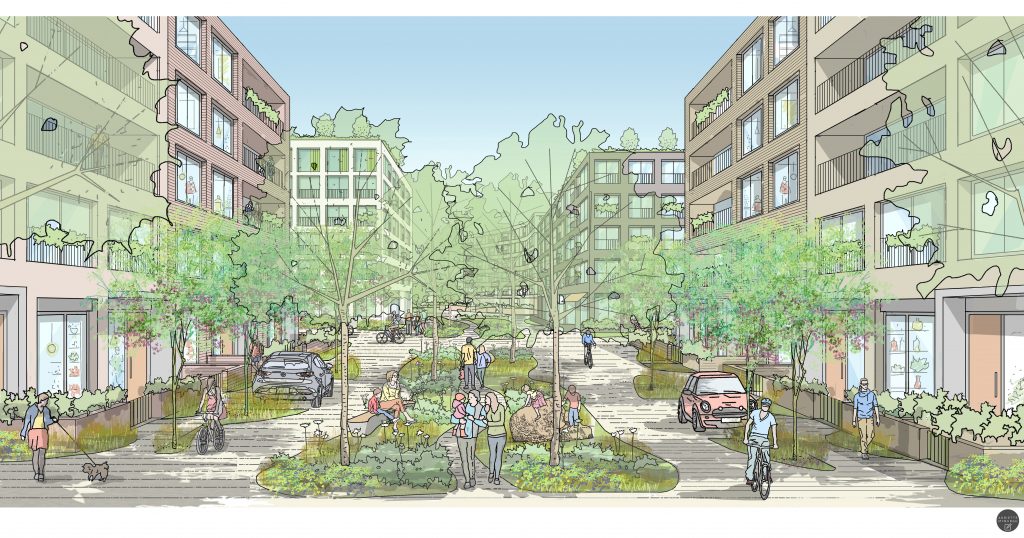
Image credit: The Equitable Suburb, Glenn Howells Architects
For 2021’s London Festival of Architecture on the theme of Care, Glenn Howells Architects is exploring the evolution of the suburbs. Constrained by greenbelt and low-rise suburban scale, outer London has historically taken a backseat in London’s recent growth, yet over the coming decade, under new government planning guidelines, boroughs in outer London will be expected to deliver more housing than those in the centre, putting more pressure on local infrastructure, natural resources, public open space and the industrial heartlands.
As a home to the majority of Londoners, the suburbs have long been embraced as an escape from busy city life. With access to well-built and flexible housing stock, green and open space and quick connections to central London, outer London has offered a counterpoint to the congestion, pollution, noise, and twenty-four seven living associated with higher density, central urban zones.
Recently however, local areas with high levels of public transport accessibility are being asked to adopt an increasingly intensive approach to development. At the same time, the pandemic has delivered new opportunities for flexible working, bringing with it a greater appreciation of local residential areas, and a potential long-term shift away from the long commute into central London.
This presents a challenge to outer London suburbs and the local and political authorities who govern them. Local authorities will need to carefully consider how to deliver new homes and intensify suburbs, whilst maintaining, and ideally improving the traditional qualities which define them.
In terms of transport, urban planning has historically focused on linear transport corridors to carry city workers from suburban local centres into central London, road networks which have come at the expense of air quality. Initiatives such as London Overground and Croydon Tramlink have been partially successful in addressing this issue of pollution, although the current economic climate will prohibit any new infrastructure projects on this scale for the foreseeable future.
To avoid car dependency today, we need a radical, and localised approach; one that rests on a polycentric model, that puts the emphasis on walkable streets for neighbourhood errands, and cycling corridors for local trips. This expanded district neighbourhood approach also opens more opportunities for people to access transport hubs, co-working hubs, and local businesses and services.
The extra time invested in the local community under this framework boosts local economies, at the same time creating more community connections, family time and healthier streets – not just retaining the positive qualities represented by the suburbs but enhancing them and making them more accessible. One way it makes the suburb more equitable is by giving lower-income households, least likely to own a car, greater access to both green spaces and local amenities.
However, in order to retain the positive qualities which make the suburbs so special, and build a more equitable society, these areas must evolve in a way that puts citizens that live, work, and inhabit them at the heart of the development process. Systems must be put in place where citizens are listened to, and cared for, to make sure suburbs stay distinct, stay empowered, and continue to play a critical role to Greater London as a whole.
The Equitable Suburb – Studio Late
17 June 6-8pm
Courtyard, Middlesex House, 34-42 Cleveland Street, London W1T 4JE






